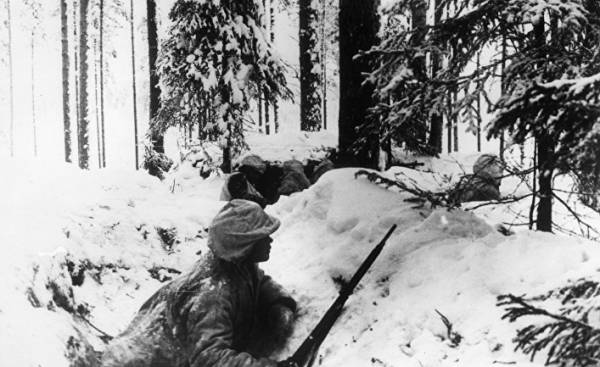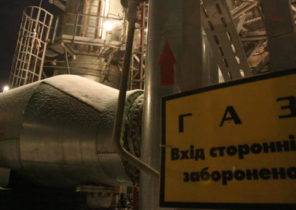
The phrase “Manelski incident” is so firmly linked to the national memory of the Finns, even the very young generation very quickly remember. The expression was literally “a household name”, at present it can be used to talk about the military pageants and the information war.
For example, during the capture of the Crimea and war in Eastern Ukraine many times one gets the impression that Moscow will again use the scenario in which at the time, Finland was trying to expose the instigator of the Winter war.
Only after the collapse of the Soviet Union, in Russia began more widely acknowledged that Finland did not produce artillery rounds and killed four Soviet soldiers on the field of a small border village Mainila 26 November 1939 (before 1948 — “Maynila”; the modern name — “Maynila”, approx. TRANS.). However, revealing the fact that until now in Russia there are people who believe in the guilt of Finland in the “shots in Mainila” or deliberately trying to force others to believe this statement on the Internet.
And as of now lives in the village, at the location where the Finnish-Soviet border was doing a little bend, like an old Ingrian village and points in the direction of Finland finger?
Location the village of Maynila was the perfect place for all kinds of provocations and border violations, there is therefore nothing surprising in the fact that the Soviet leadership has chosen to stage it.
By the beginning of the Winter war in Mainile had about forty houses, and the border with Finland were almost a kilometer from the village. The border was like a Sister river.
It was difficult to imagine how looked the area. A passerby would not even come to mind that he is now at the former border area, which became a legendary historical stage. All visible signs of the former border and the old village Mainly long gone.
From Russian sources it becomes clear that after the collapse of the Soviet Union in the village there was only one resident resident. But now the wind blew fresh. In 2010, the number of residents increased to nine, and today the village is home to a few dozen or even hundred people coming here for the summer. Many of them remain here for the winter.
On the edge of the field that was once the former aim artillery shots, recently increased suburban village rich Russian. Some houses are already ready, the other part is finished. As is customary in Russian, usedonmost of the plots are hidden behind high fences, which can not penetrate the eyes of an outsider.
At the entrance to the holiday village there’s a sign that says that we are in Manila, is a village on the Russian twist. Also it shows more precise location: Spring street.
When the journalists of the newspaper Ilta-Sanomat came in Manila last summer, the village street was deserted. Was a lot of building work.
In response to questions about the incident Manilskom local people either shrugged their shoulders or pointed in the direction of the far field, because someone told me that there is a monument associated with the war. However, almost no one knew or wanted to tell about the history of their new place of residence.
However, later we caught up with a cozy red house, whose yard was put in order vigorous, but it is clearly a middle-aged woman. Maybe she belongs to a generation for whom “Manelski incident” — not just empty words?
“Of course I know that the village of Maynila associated with the beginning of the Winter war. My father had to participate in the Finnish campaign,” immediately meets Nina Elapco.
When her father Ivan went to the Winter war, Nina was very young. The family lived then in the Pskov region, near the border of Estonia and Latvia, therefore, directly related to Mainile they had not.
Nina later learned that the village Mainila in November 1939 was what the Soviet propaganda blamed “military of Finland”, and why dad had to leave for the front. But she could assume that eventually she will have to live with the family daughter that is a field from which to make a formal reason for the beginning of the Winter war.
From the Winter war, a little girl’s memories of constant fear for the life of the father and severe frosts that winter.
“I remember I was afraid that the father will freeze to death, and begged the sun to warm it in the war,” says Elapco.
Maybe thanks to the prayers of a little girl, my father returned alive from the Finnish campaign, as it was called in the Soviet Union the Winter war. The father, however, never before in detail talked about the war, Yes the little girl was not interested in.
“It was such an ordeal that they didn’t want to talk. When I finally ended the Great Patriotic war, everyone wanted only one thing — to forget everything and start a new life.”
Fully Maynila in the history of the Winter war, not forgotten, but bystanders have not ask one person before you find someone to show you the way to the monument, telling about “shots in Mainila”.
We are talking about a modest wooden monument, established on the edge of a field among the rocks. On the monument there are two small flag — Finland and the Soviet Union. On the red sign — concise text:
“Here, on the former site of the village Mainila, November 26, 1939, shots were fired which led to the outbreak of the Soviet-Finnish war of 1939-40”.
It is obvious that the inscription on the plate is carefully thought through, as from the text it is impossible to conclude who fired the shots. And, in addition, stated that the shots “came” — about this there is evidence even Finnish soldiers.
Later Finnish patrol saw from your vantage point, located in the town of Americka that the field Mainly there were seven funnels, the importance of which they did not know.
But that same Sunday night came from Moscow note that from Finland the village Mainila produced seven artillery rounds, killing three privates and one Junior commander. In addition, it was reported that seven soldiers and two commanders were injured.
When considering a modest monument dedicated to the shots in the village Manila, pay attention to the fact that the plaque makes no mention of the victims of the incident, not to mention the fact that their names are not listed. The names of the alleged victims of the shelling was not found in any Soviet archive, as well as no indications of a change in the number of personnel of the red army on this day.
First, in Finland, thought Mainile which there occurred an accident on the teachings of the red army, the blame for which is trying to put the blame on Finland. But if it actually were killed and wounded, did the Soviet propaganda would conceal their names? Surely the sovets wave of patriotism the names of the “martyrs Mainly” would be made public, and they would put a Grand monument on the money of Moscow.
The monument is now Manilskom incident looks exactly which is the memory of the Winter war in Russia: nobody really don’t want to remember, not to mention the fact that I don’t want to understand what actually happened.
But in Russia still there are people who did not break the official propaganda. One of them is Egor Elisavetsky who understood the real nature of the shots in Mainila still in high school.
“That was more free time, and I remember that we quite openly said that the initiator of the Winter war was the Soviet Union. Later I figured it out myself when we moved here in Manila,” says Elisavetsky.
Elisavetsky also showed reporters Ilta-Sanomat monument to those killed in 1944 during the continuation War the Soviet soldiers, who was recently put in order.
This monument lists all the names of the victims, and one of them was posthumously awarded the title Hero of the Soviet Union. It is clear that these victims of modern Russia to remember easier than a fictitious dramatization.
Finnish soldiers were surprised, “where did the damn hole”
On the Internet pages of the Finnish society of veterans Veteraanien perintö huntsman Kulmala Lauri (Lauri Kulmala) describes the day 26 November 1939, when the sound of gunfire in Mainile heard on the Finnish side.
He Kulmala at the time the post was not. About the incident he told the corporal Toivo Hanninen (Toivo Hänninen) and the huntsman unto Sundwall (Unto Sundvall).
“At 13:00 in our location arrived huntsman Sundwall, working guy, which was charged with monitoring appeared on the field Mainly craters, which he, being under the influence, called “devil’s holes”. Later historians would call them “shots in Mainila” or “Manilskom incident,” says Kulmala in his article, which was published in the magazine Suomen Kuvalehti in 1964.
The closest observation point of the Finns was a lookout tower in the town of Amerikka, a kilometer from the field Mainly. The visibility that day was bad due to the fact that it rained with snow, but not so bad that it was impossible to discern important details.
At that stage, when the Finns was not yet known that the Soviet Union announced the availability of dead and wounded, the soldiers did not consider the incident unusual, although he reported that they heard the sounds of exploding shells. Later Sundwall described that he had also seen some erratic movement in close proximity to the funnels.
“On the edge of the craters were people and looked at them. Or just peed!”
On the Finnish side knew that the Soviet soldiers carried out military exercises in the morning nearby. The Finns had a strict prohibition on opening fire, which is clearly observed because of the danger to be under a military Tribunal.
First, in Finland, thought that perhaps we are talking about some accident that happened on the teachings of the red army, but the Finnish soldiers immediately began to doubt it.
“On the hill Amerikka a distance of 800 metres, they would get a good look at the bodies of the dead and wounded from the craters, or at least as they are transported from the place of the burst of a shell, if the tragedy really happened, as mentioned in the note,” — emphasizes the huntsman Kulmala in his memoirs.
Finland replied to the note of Vyacheslav Molotov, on 27 November, and the Ambassador of Finland in Moscow Aarno yrjö-Koskinen (Aarno Ilpo-Koskinen) fully rejected the claims of the Soviet Union:
“In connection with the alleged violation of the Finnish government to urgently made a proper investigation. It was found that the cannon shots mentioned in Your letter, was not made with Finnish side”.
On 28 November, the Soviet Union sent a sharp response the note, which reported that he was forced to withdraw from the Pact. Denying his guilt in the shots in the village Mainila, Finland, in Moscow’s view, “demonstrated hostility towards the Soviet Union” that entailed sacrifice, and introduced public opinion astray. Then it became clear that this is not just words.
The red army opened artillery fire on 30 November at 06:50.







